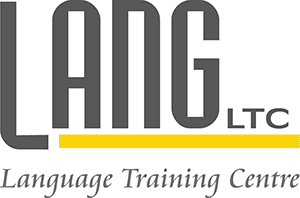IELTS test format in detail

IELTS tests four language skills and consists of four parts – Listening, Reading, Writing and Speaking.
- Listening, Reading and Writing must be completed on the same day, with no breaks in between them. This lasts 2 hours and 45 minutes in total.
- Speaking test may be offered on the same day as the other sections of the test, or up to a week before or one day after. It lasts 10-14 minutes.
Only IELTS offers you tests suited to your study, work or migration needs.
How are the two tests different?
All test takers take the same Listening and Speaking tests but different Reading and Writing tests.
IELTS Academic
Speaking
11-14 mins
Assesses your use of spoken English by face-to-face interview without disruptions or distractions.
Part 1 – the examiner asks you general questions about yourself and a range of familiar topics, such as home, family, work, studies and interests.
Part 2 – you are asked to talk for up to two minutes about a particular topic. You have one minute to prepare. Then the examiner asks one or two questions on the same topic.
Part 3 – you are asked questions about the topic in Part 2. These gives you the opportunity to discuss more abstract ideas and issues.
Important: Every speaking test is recorded. Your speaking test may be administered on the same day as the other sections of the test, or up to a week before or one day after. You will receive notification seven days in advance if your speaking test is on a different day to your main test day.
Reading
60 mins
3 long texts taken from books, journals, magazines and newspapers, notices, advertisements, company handbooks and official documents. They have been selected for a non-specialist audience but are appropriate for people entering university courses or seeking professional registration.
The Reading section consists of 40 questions, designed to test a wide range of reading skills.
Writing
60 mins
ou write a table, chart or diagram (150 words) and a short essay (250 words).
Part 1 – you are presented with a graph, table, chart or diagram and asked to describe, summarise or explain the information in your own words.
Part 2 – you are asked to write an essay in response to a point of view, argument or problem.
Responses to both tasks must be in a formal style.
Listening
30 mins (+ 10 minutes to transfer responses to the answer sheet)
You listen to four recordings of native English speakers and then write your answers to a series of questions.
Part 1 – a conversation between two people set in an everyday social context.
Part 2 – a monologue set in an everyday social context, e.g. a speech about local facilities.
Part 3 – a conversation between up to four people set in an educational or training context, e.g. a university tutor and a student discussing an assignment.
Part 4 – a monologue on an academic subject, e.g. a university lecture.
IELTS General Training
Speaking
11-14 mins
Assesses your use of spoken English by face-to-face interview without disruptions or distractions.
Part 1 – the examiner asks you general questions about yourself and a range of familiar topics, such as home, family, work, studies and interests.
Part 2 – you are asked to talk for up to two minutes about a particular topic. You have one minute to prepare. Then the examiner asks one or two questions on the same topic.
Part 3 – you are asked questions about the topic in Part 2. These gives you the opportunity to discuss more abstract ideas and issues.
Important: Every speaking test is recorded. Your speaking test may be administered on the same day as the other sections of the test, or up to a week before or one day after. You will receive notification seven days in advance if your speaking test is on a different day to your main test day.
Reading
60 mins
You read 5-6 short texts taken from books, journals, newspapers, magazines, notices, advertisements, company handbooks and guidelines. These are texts you are likely to encounter on a daily basis in an English-speaking environment.
The Reading section consists of 40 questions, designed to test a wide range of reading skills.
Writing
60 mins
You write a letter (150 words) and a short essay (250 words).
Part 1 – you are presented with a situation and asked to write a letter requesting information, or explaining the situation.
Part 2 – you are asked to write an essay in response to a point of view, argument or problem.
Responses to both tasks must be in a semi-formal style.
Listening
30 mins (+ 10 minutes to transfer responses to the answer sheet)
You listen to four recordings of native English speakers and then write your answers to a series of questions.
Part 1 – a conversation between two people set in an everyday social context.
Part 2 – a monologue set in an everyday social context, e.g. a speech about local facilities.
Part 3 – a conversation between up to four people set in an educational or training context, e.g. a university tutor and a student discussing an assignment.
Part 4 – a monologue on an academic subject, e.g. a university lecture.
Important: Before booking your test, make sure to check which test you need with the organisations you are applying to.

